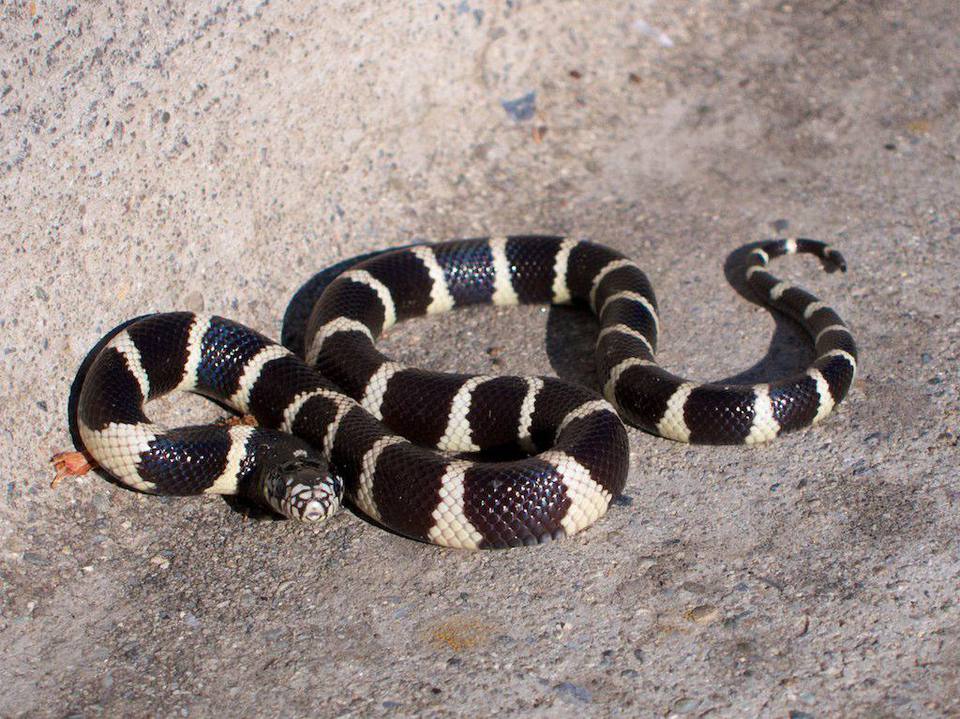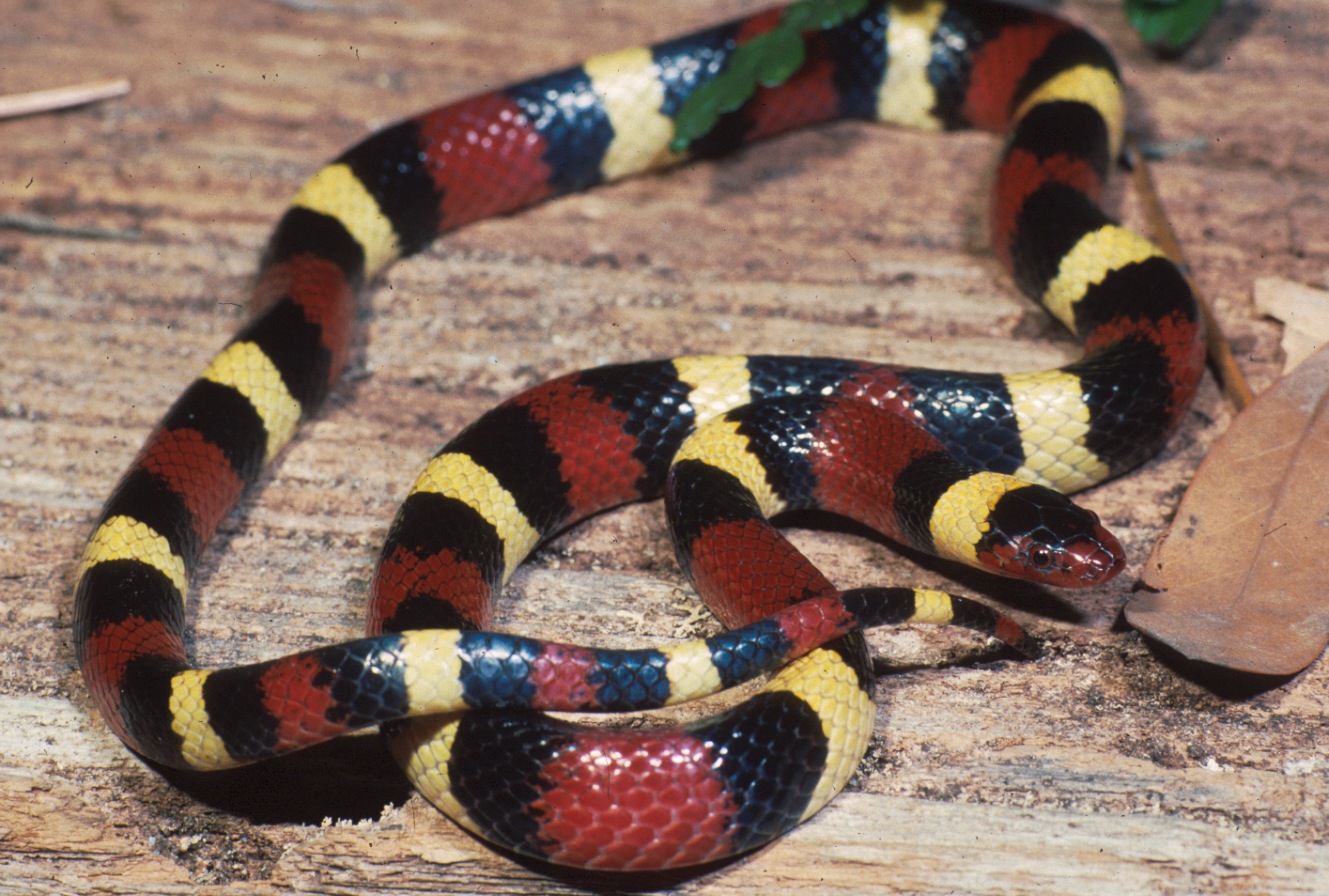We have the most venomous creatures in the world here in Australia

and we say to tourists that everything out here wants to kill you and eat you.
Here is one snake called the eastern brown snake with the website being found here -https://
www.qm.qld.gov.au/Find+out+about/Animals+of+Queensland/Reptiles/Snakes/Common+and+dangerous+species/Eastern+Brown+Snake#.XX3SfmYRXIU . We have lots of them on our property and our cat catches and kills them which we are fine with.
Pseudonaja textilis
Eastern Brown Snake,
Pseudonaja textilis
Photograph by Angus Emmott.
An Eastern Brown Snake,
Pseudonaja textilis in characteristic defensive posture (note the distinctive spotting on its belly).
Photograph by Richard Jackson.
Characteristic head markings of a juvenile Eastern Brown Snake.
Identification:
The Eastern Brown Snake may be any shade of brown but can also be grey or black. Some individuals are banded. The belly is typically cream with pink or orange spots. Juveniles may be plain or banded and have distinctive head markings consisting of a black blotch on the crown and a dark neck band. This species grows to 2 metres. Midbody scale rows 17; ventrals 185–235; anal divided; subcaudals divided 45–75.
Distribution:
Found over most of Queensland, New South Wales and Victoria. It also occurs in southern South Australia and there are isolated populations in the Northern Territory. This species is also present in southern Papua New Guinea.
Habitat:
Found in all habitats except rainforest. It has adapted well to farmed, grazed and semi-urban lands. In South-eastern Queensland, this species is particularly common around Beenleigh and Ipswich.
Habits:
This species is active by day, although young Eastern Brown Snakes are often encountered at night.
Danger:
This species is dangerously venomous and has been responsible for many human deaths. The venom is strongly neurotoxic. If bitten, apply first aid and seek urgent medical attention. First aid procedure for any snakebite from the
Australian Venom Research Unit
.
Eastern Brown Snakes can be pugnacious when provoked and rear up in distinctive "S" shape.
Food:
Feeds on frogs, reptiles, birds and mammals.
Breeding:
Mating occurs in spring and early summer. Up to 28 eggs are laid. Hatchlings are around 19 cm from the tip of the snout to the base of the tail (snout-vent length).






















